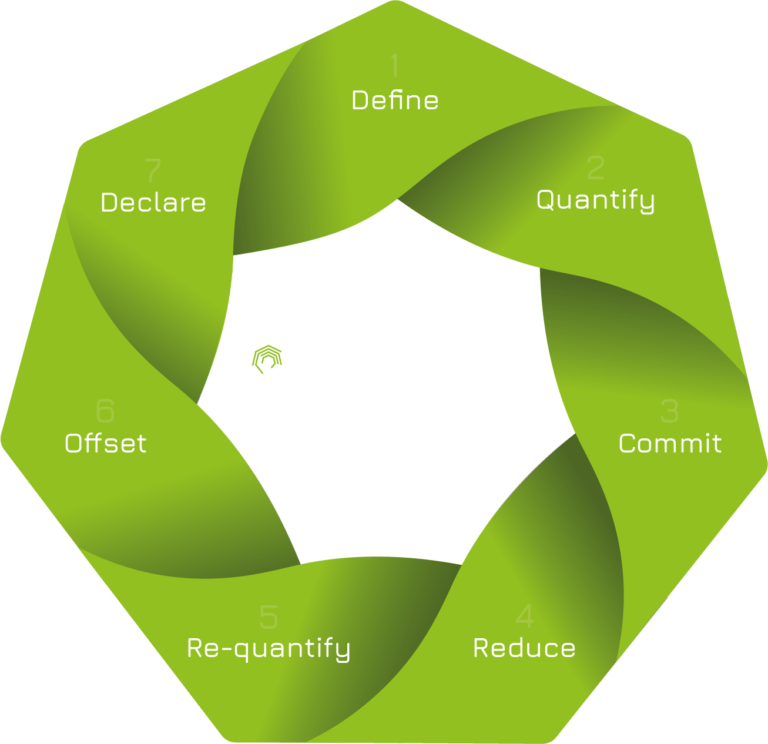As climate change continues to pose a significant threat to our planet, businesses of all sizes are now recognising the need to address their carbon footprint. For small businesses, taking steps to reduce carbon emissions is not only an environmentally responsible choice but can also lead to cost savings and improved brand reputation. This blog post will provide a step-by-step guide for small businesses looking to create and implement a carbon reduction plan.
Step 1: Measure Your Carbon Footprint
The first step in creating a carbon reduction plan is to measure your current carbon footprint. This involves calculating the total greenhouse gas emissions produced by your business operations. Various tools and resources are available to help you with this process, such as the U.S. Environmental Protection Agency’s (EPA) Simplified GHG Emissions Calculator or the Carbon Trust’s online calculator. By understanding your current emissions, you can identify areas for improvement and set realistic reduction targets.
Step 2: Set Reduction Targets
Once you’ve calculated your carbon footprint, setting reduction targets for your business is the next step. It’s important to set realistic and achievable goals that will still significantly impact your emissions. A common target for small businesses is to aim for a 10-20% reduction in carbon emissions within a specific timeframe, such as one year or five years. Make sure to establish a baseline year for measuring progress against your targets.
Step 3: Identify Reduction Opportunities
With your reduction targets in place, it’s time to identify the opportunities within your business to reduce your carbon emissions. Some common areas to explore include:
- Energy efficiency: Making your business more energy-efficient is key to reducing your carbon footprint. Consider implementing energy-saving measures such as installing LED lighting, improving insulation, and upgrading to energy-efficient appliances and equipment.
- Renewable energy: Switching to renewable energy sources, such as solar or wind power, can significantly reduce your business’s carbon emissions. Consider options for installing solar panels or purchasing renewable energy certificates to offset your energy use.
- Transportation: Transporting goods and employees can be a significant source of carbon emissions for small businesses. Consider implementing strategies to reduce transportation emissions, such as encouraging telecommuting, using fuel-efficient vehicles, and optimising delivery routes.
- Waste reduction: Reducing waste within your business can positively impact your carbon footprint. Implement waste reduction strategies, such as recycling and composting, and consider purchasing products with minimal packaging.
Step 4: Develop an Action Plan
Once you’ve identified the areas where your business can reduce its carbon emissions, develop a detailed action plan outlining the specific steps you will take to achieve your reduction targets. This should include timelines, responsible parties, and estimated costs for each action. Make sure to prioritise actions based on their potential impact on your emissions and feasibility for your business.
Step 5: Monitor Progress and Adjust as Necessary
Implementing your carbon reduction plan is an ongoing process that requires regular monitoring and adjustment. Track your progress against your reduction targets and make any necessary adjustments to your plan to ensure you stay on track. It’s also important to communicate your progress to your employees and stakeholders to maintain engagement and support for your carbon reduction efforts.
Conclusion
Creating and implementing a carbon reduction plan for your small business is an essential step towards combating climate change and improving your overall sustainability. By measuring your carbon footprint, setting reduction targets, identifying opportunities, developing an action plan, and monitoring progress, you can significantly reduce your business’s environmental impact while also reaping the benefits of cost savings and enhanced brand reputation.
Are you ready to take the next step towards achieving your carbon reduction plan? Look no further than Carbonology®! Our proven method can help you go carbon neutral and achieve ISO standards. Whether you’re looking for credible carbon management solutions or want to align with ISO 14064 (carbon verification) and PAS 2060 (carbon neutrality), we’ve got you covered. Join us today and start making a difference for a sustainable future!

